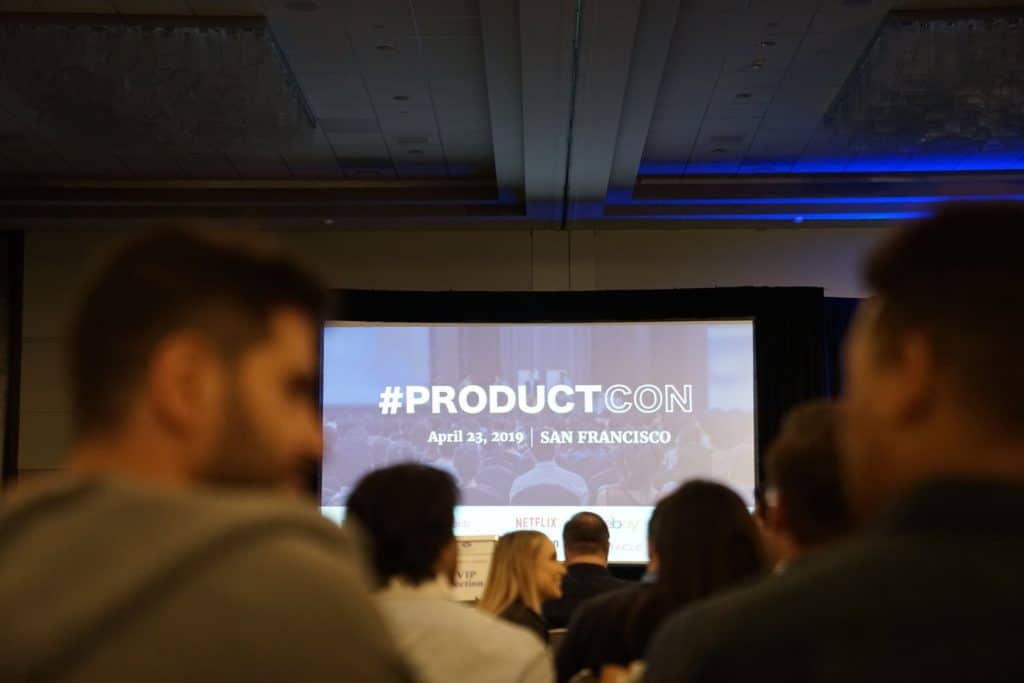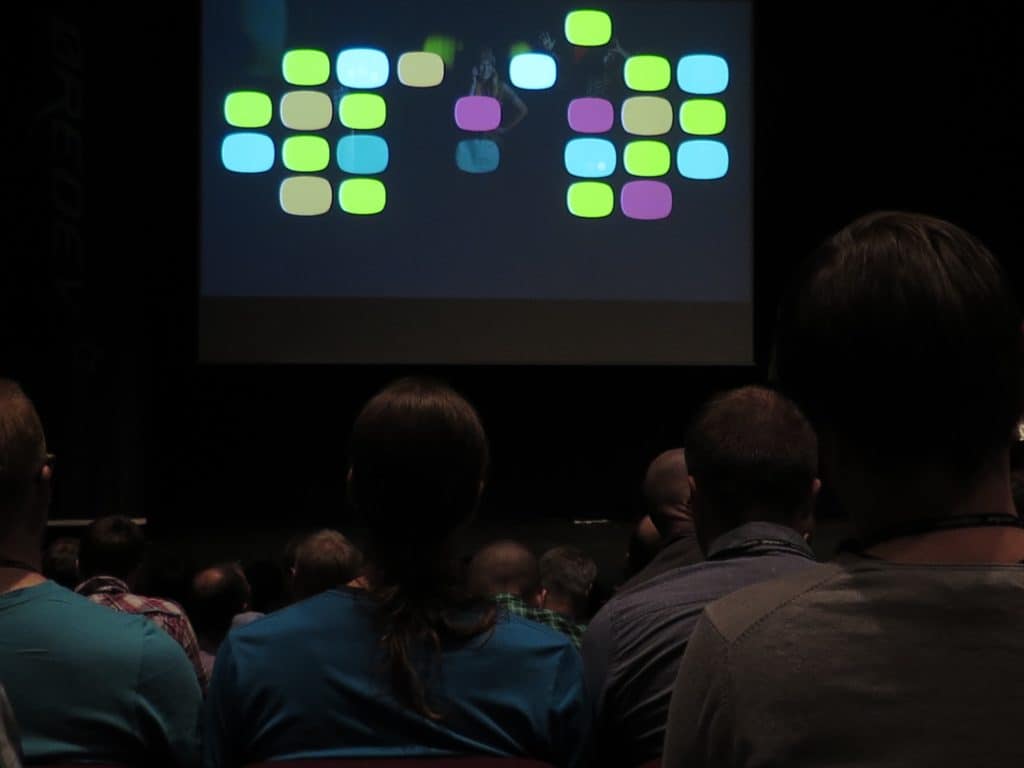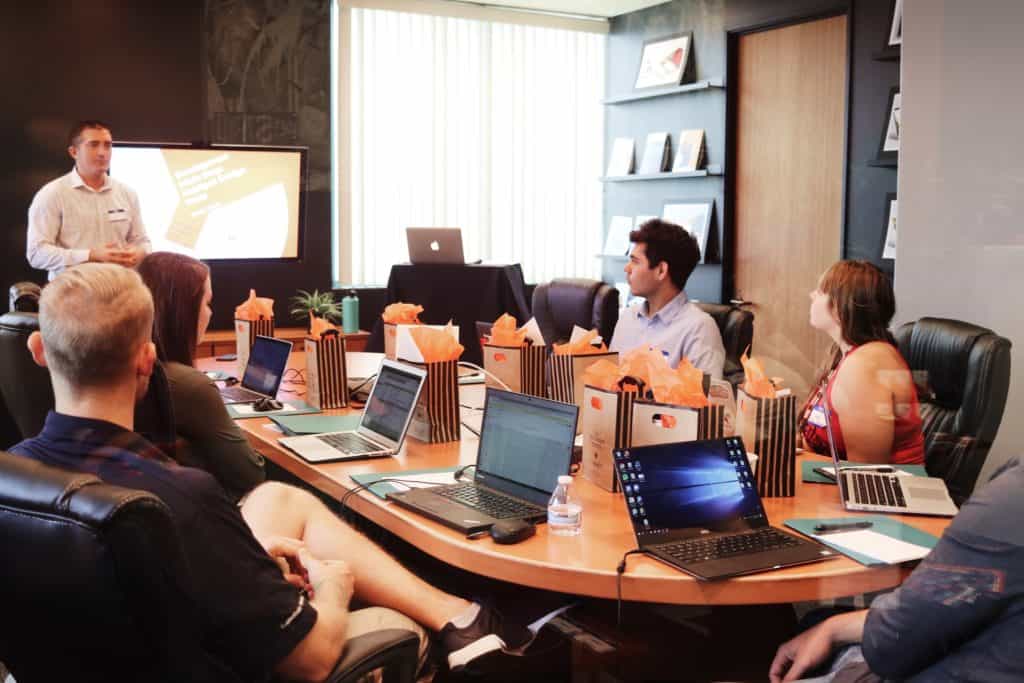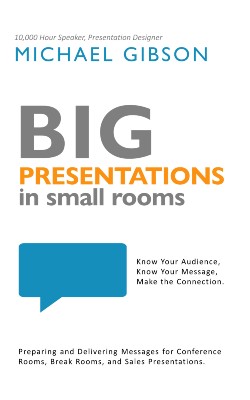Presentation Slides are a big part of most presentations.
I am curious.
When do you start thinking about the slide content?
Is it the first thing on your mind, or do you consider other things first?
If you think of other things, what are those other things?
Here is why I am curious.
PRESENTATION SLIDES: A COMMON QUESTION
A common question I am asked is this:
“What should be on the slide?”
It is a common question for a good reason. Most workplace presentations include a slide deck (A PowerPoint or Keynote Presentation). It is an expectation—even when a deck is not needed. But that is a rant for another day.
Let’s focus on making the most of our slide decks. Which leads back to the question,
“What should be on the slide?”

PRESENTATION SLIDES: A DIFFERENT QUESTION
To best answer that question, we should ask a different one.
“What is the purpose of the slides?”
Think of the presentations you have seen. Which ones were painful? Which were helpful? Which were challenging? Which were influential? Which were entertaining?
By now, you have probably observed various answers to the question,
“What is the purpose of the slides?”
PRESENTATION SLIDES: VARIOUS APPROACHES
Consider the painful presentation. The presenter might see the slide deck as a teleprompter. The entire script of the presentation is on the screen. And then the presenter reads it—and might turn their back on the audience as they do. This is an unfortunately common practice used by people who hope to be helpful and enjoyable. Most of the time, the audience’s experience is neither.

Consider the helpful presentation. The presenter views the slide deck as an educational tool-something to prompt thoughts and build recall of previous content. The presenter is thoughtful in choosing helpful content and then strategic about what words and images allow that content to stick in your mind. Or perhaps the presenter views the deck as a way of supplying an informative update and carefully chooses words and graphs that will provide context for the information.
Consider the challenging presentation. The presenter views the slide deck as a collection of words and images that lead toward a specific conclusion: do the right thing. And, of course, the presenter has a particular direction in mind (the right thing). Words are few. Images are powerful. And they all point in the same direction—the choosing of the right thing.
Consider a compelling sales presentation. It is similar to the challenging one, but with a specific product or process in mind. The words and images are chosen to highlight one idea or product as superior to the other options. The presentation slides include words and images that lead the audience to choose that option.
Consider entertaining presentations. The presenter might view the slide deck as a prop – something that creates a backdrop for a story or a punchline for a joke. The slides function as set changes on a stage. Images outnumber words. In fact, there might not be any words on the screen. The presenter knows that the positioning of the screen and the presenter are key to the performance, so rehearsal emphasizes placement.

PRESENTATION SLIDES: THE APPROACH DEPENDS ON THE PURPOSE
Do you remember this scene from Lewis Carroll’s Alice in Wonderland? Alice is lost and encounters the Cheshire Cat.
“Alice: Would you tell me, please, which way I ought to go from here?
The Cheshire Cat: That depends a good deal on where you want to get to.
Alice: I don’t much care where.
The Cheshire Cat: Then it doesn’t much matter which way you go.
Alice: …So long as I get somewhere.
The Cheshire Cat: Oh, you’re sure to do that, if only you walk long enough.”
A similar point could be made regarding slide content.
“What should be on the slide?”
“That depends on the purpose of the slides.”
If you do not have a defined purpose for your slides, then you will be wandering, and your audience will be frustrated.
You will get somewhere, but that destination is likely to be unpleasant, and the people following you will likely be unpleasant as well.

PRESENTATION SLIDES: HELPFUL QUESTIONS
“What should be on the slide?”
That is a good question. And it is best answered once some other questions have been asked first.
You know one of the questions.
“What is the purpose of the slides?”
Here are some other questions.
“What is the goal of the presentation?”
“Who is in the audience?”
“What is the verbal content of your message?”
“How much time do you have?”
“What on-screen elements will be most helpful?”
The mantra of Big Presentations is this:
Know your audience.
Know your message.
Make the connection.
This mantra can guide the development of your slide deck.
When you know your audience and know your message, then the question becomes,
“What slide content will best connect the audience to the message?”
Wow. We are asking many questions! But the answers can guide you to create slide decks that will help you deliver Big Presentations in Small Rooms.

PRESENTATION SLIDES: ADDITIONAL RESOURCES
Want to know more? Keep reading the blog!
Do you prefer to listen? Check out The Big Presentations Podcast!
Want to know even more? Order the book Big Presentations in Small Rooms!




